While checking in for a flight at the Mundo Maya Flores airport, in Northern Guatemala, I heard the unmistakable voice of who I thought was Dr. Richard Hansen, renowned archeologist and researcher. With the goal of experiencing the hidden gems of the once forgotten Mayan empire, I spent three days in Flores, Guatemala scouting Yaxha and Tikal National Archeological Parks. Together, Tikal and Yaxha rank high on the must list for those traveling to Guatemala and the Mayan biosphere region. Yaxha National Park has over 500 structures and Tikal in excess of 3,000. Together, these two beautiful parks welcome more than 350,000 visitors annually.

Wooden Signs point visitors to the Acropolis at Tikal Park in the Mayan biosphere region of Guatemala.
If world-famous Tikal is the Instagram moment worthy of selfies, then Yaxha is the lessor known, second-day excursion of what could easily be a four-day ecological adventure to the heart of the Mayan Mundo. Tikal is expansive and covers 220 square miles; Yaxha, roughly 140 square miles (for comparison, Mount Rainier National Park, in the U.S. state of Washington, covers roughly 370 square miles). Yaxha and Tikal Archeological Parks are pristine, surrounded by an additional layer of protection that offers some degree against future logging; nonetheless, these parks are endangered. Much of the canopy that surrounds these two parks, in the Mayan biosphere region, are at risk. As virgin timber is logged and replaced with lucrative cash crops of palm oil and related, illicit agricultural practices, the parks are threatened by corrupted, commercial development. Preservation can always be strengthened; in the Mayan biosphere region, air is purified, cleansed and carried through the Yucatan Peninsula, over Cancun and Merida, Mexico, to be dispersed in what is roughly the size of the southeastern portion of the US.
A Jungle Swallows the City
What makes the Mayan biosphere special is that it was only recently established (1990) on behalf of the Guatemalan National Council of Protected Areas. There are well over 500 different types of aviaries, nearly 60 different types of reptiles and amphibians and more than 700 species of mammals, including the elusive and endangered Jaguar.
Furthermore, preserving the tree canopy and the Mayan empires in this region remain an ongoing challenge. Just outside the Mayan biosphere reserve, most visitors comfortably venture around the island village of Flores and its mainland neighboring city of San Benito. In these two towns, creature comforts abound, respite with hotels, name-brand stores and restaurants – all within two hours of the Tikal and Yaxha. I opted to stay at the Hotel Villa Maya, tucked along the shores of Lake Petenchel. Laid out as an expansive and tranquil resort, its swimming pools are refreshing and a much welcome respite from the heat. Given its environment, it is generally suggested not to swim in the nearby lake (crocodiles). Inside the parks, there are Jaguars, Pumas, monkeys and the Coatis, a racoon-like animal.
Both parks are separated by very modern, two-lane roads with bucolic countryside that beckons travelers to slow down and simply appreciate life. On the main highway, just outside Tikal, small mom-and-pop hotels line the Lake Petén region. Driving in the opposite direction to Yaxha, requires a return from Tikal to the junction of San Benito and then diverging from a branch in the road eastward towards the border of Belize. Here, additional roads are being paved; however, the final three miles to Yaxha are not, and anything less than a four-wheel SUV will simply not suffice.
What I find positively revealing is how these parks and towns are depicted; exquisite and colorful murals dot Flores which is Lake Petén’s only island and tourist hub. Over the years, Hollywood has put this region on the map and encouraged countless people to visit. Movies, such as Star Wars and Apocalypto place Tikal in pivotal scenes. It’s no wonder the magic of movie-making is instrumental in drawing tourists to such hauntingly beautiful places that exist in this corner of Central America.

Visitors to Tikal National Park experience Temple III
Having spent four days thoroughly detoxing from work, it was time to return to Guatemala City and then slowly make my return trek to the U.S.A.
This year marks the 43rd anniversary of Dr. Richard Hansen (originally a graduate student), first setting foot in the Petén, El Mirador basin of Guatemala. At its height, this region had anywhere between 80,000 and 100,000 citizens, at least. Here, hidden in amongst the jungle overgrowth was where Dr. Hansen began his groundbreaking research of past Mayan civilizations. Hansen’s research in the remote rainforests of northern Guatemala in the Mirador/Calakamul (Mexico side of the border) region has significant reach; he has been doing it since he first set foot in 1979.
His research has involved dozens of scholars from global universities and research institutions. His work on ancient Mayan civilizations produced a wealth of scientific discoveries and remind us of how alike and interconnected we are with other cultures. The seventy-year-old Central American icon has not only authored several research projects and books but has also founded his own organization to carry forward his pioneering work, The Foundation for Anthropological Research & Environmental Studies (F.A.R.E.S).

Dr. Hansen reviews the efforts of his team in cataloging ceramic pieces at the FARES laboratory.
Dr. Hansen and his team have utilized old-school data to map the many parts of the El Mirador basin; most recently, utilizing technology from light detection and ranging (LIDAR), which has significantly shortened the time involved to map the topography. As a result, by electronically stripping all visible vegetation and incorporating virtual reality, one can peer into what the topography reveals. With funds from generous financial contributors, his team has excavated and preserved more than 50 different ancient city empire sites in the Mirador basin. Hansen’s studies have been published in numerous peer-reviewed journals and are exceptionally thorough, with data that supports the mission of all involved. I learned of Dr. Hansen by watching the American television show Expedition Unknown with the gregarious and affable television host/presenter, Josh Gates.
An Unlikely Collaboration Yields Incredible Results
Together, these men have collaborated on select expeditions to El Mirador. They venture deep into the Mayan biosphere to literally go where no one has explored in millennia. I was captivated at the episodes they produced. The power of the El Mirador complex and the La Danta temple regional artifacts extricated, preserved and sent to Guatemala City – is nothing short of a logistical coup d’état. Inside the capital city, further work involving cataloguing and conservation takes place under the watchful eyes of archeological preservationists.
It is not easy to travel to the Mirador basin and specifically to La Danta; the journey is easily three days to the snake-plagued, monkey-slinging feces area where Dr. Hansen and his team currently works. La Danta, inside the El Mirador complex, is a trek unlike any others (unless one is privileged with the financial means to helicopter, with sufficient security, directly to the site). This site is still mostly off limits to tourists, although there is a growing number of guides advertising on-line to lead visitors. One must remember that until recently, everything had been enveloped in jungle growth for nearly two thousand years.

Dr. Hansen analyzes a Pre-Columbian, partially reconstructed ceramic plate.
Dr. Hansen’s work is far from dull and it is evident in conversations. He is after all, overseeing what is arguably the largest archeological excavation in the world. Embedded in the Mayan biosphere basin region lies not only Tikal and Yaxha but, much farther north, the El Mirador complex. Since its initial discovery, nearly one hundred years ago, La Danta has only recently revealed some of its secrets, including what is arguably the world’s largest pyramid base. Today, we now know the idea of grand pyramids isn’t limited to those in Sudan or Egypt – La Danta is in good company with these monuments, placing it as the fifth tallest in the world. More impressive is its voluminous base. Placed in downtown Los Angeles, it would be three times larger than the entire central business district.
Dr. Hansen’s work has also radically challenged how people view the history of the various Mayan empires. Before then, the belief that the great temples, pyramids, murals and stone carvings dated to no earlier than the classic Mayan period (250-900 A.D., about the time of the early European Middle Ages).
After the year 900 A.D., many Mayan civilizations started to slowly dismantle for multiple reasons, ranging from climate to famine to intra-war fighting, eventually becoming extinct, with the Petén jungle enveloping much of these iconic monuments. Many of these empires were connected by raised, limestone roadways that are still intact today. Ironically, insofar as the research shows, the Mayan civilizations did not have access to the wheel.
By the time the Spanish conquistadors began arriving in the 1520s, much of Mayan civilization was decimated. What remains of the architectural ruins laid hidden and covered beneath the canopy for eons prior to the Spanish invasion.
Here is where the story begins of how Hollywood portrays the Mayan civilization. True to form, most movies depicted the Mayan empires as active during the time of Columbus, however most Mayan civilizations had already collapsed and were long forgotten by the time Columbus entered the West Indies, now referenced as the Caribbean islands. There’s absolutely no evidence the Italian explorer Christopher Columbus was a pioneer (he received his financing on behalf of the Spanish King) to what is modern day Guatemala. His fourth voyage, however, does indicate he travelled along the Eastern shores of Honduras towards Panama.
I finished lunch at La Casa De Enrico on Flores Island; this excellent restaurant caters to those who desire sustainable and authentically prepared food that places a premium on signature dishes. A quick tuk-tuk ride (less than five minutes) dropped me off at Mundo Maya airport. Once I was past security and seated in the waiting area for the pending return flight to Guatemala City, I saw the practically incognito Dr. Hansen. Much of the public would not recognize him in Central America, as he is increasingly becoming well-known through his preservation and archeological work in academia and recently, American television shows.
I approached Dr. Hansen without first introducing myself.
“Hi, you’re Dr. Hansen, originally with Idaho State University but now affiliated with the University of Utah?” I asked.
He was pleasantly surprised about what I knew of him and of course, inquired to who I was. While we waited to board our return flight on TAG airlines (national airline of Guatemala), we discussed the complex challenges at the basin in regards to archeological looting, not just inside the El Mirador complex, but everywhere in Central America (and the world for that matter). We shared commentary surrounding the effects of climate change, in this case; severe basin drought, the steady drumbeat of tourists increasingly accessing once geographically isolated regions and best practices to provide stability and income for the Mayan people. His efforts are altruistic, collaborative and transparent – so much that the Guatemalan Ministry of Defense bestowed upon him one of the highest civilian awards of the land, the Orden de la Monja Blanca. Several years ago, LatinTrade magazine identified him as one of the most influential people positively affecting Guatemala.
No matter what topic was discussed – whether it be his on-going efforts in the El Mirador basin or preservation of the numerous Mayan temples – he presented himself as approachable and genuine. His work with the pyramid temple Jaguar Paw has proven noteworthy; settlement now solidifies people were living here a full 500 years earlier than previously thought. The La Danta pyramid is now recognized as being slightly taller than Tikal (236 feet vs. 213 feet). My question is arguably what everyone else wants to know; how does his team find, secure and transport these Mayan artifacts before looters get to them?
To answer that question, upon return arrival to La Aurora International airport, I decided to extend my stay in Guatemala City. Dr. Hansen invited me to visit the forensic research center and learn more about the process of how Mayan artifacts are pieced together, catalogued and transferred to various museums including the Guatemalan National Museum of Archeology and Ethnology.
But the question I had was
“…..what becomes of the artifacts that are painstakingly removed?”
History Provides Clues for Current Society
Frantically working against time, efforts to stabilize the multitude of uncovered Mayan structures, preserve, map, quantify/interpret research data and secure site locations is a never-ending challenge. Trafficking in Mayan artifacts – anywhere in Central America – is a multimillion-dollar enterprise and carries with it, significant risk of death for those who dare to restrict the trade. Given that, the heavily secured team carries out their efforts with an eye towards sleuthing and preservation. It’s no small feat to suggest the work is arduous, especially in the never-ending sweltering humidity that encompasses the reserve.
Hidden inside an undisclosed (and very secured) location in central Guatemala City, the research center is stacked with artifacts across centuries. The FARES forensic center, where pieces are given a data tag, catalogued and, in successful cases, reconstructed, takes time and requires the efforts of hired employees. Dr. Hansen has significant history of supporting local populations to do this work. Through his FARES organization, he employs hundreds of local workers in the basin, along with well over 60 students from global research institutions; additionally, he works with various Guatemalan levels of government. American detractors and critics of Dr. Hansen have been vocal in their efforts to incorrectly frame his life efforts as imperialistic and colonialist, including a disruption at a Los Angeles Festival of Books reception.
Nothing could be further from the truth. His reputation is solid with evidence supporting the people who could benefit from sustainable eco-tourism endeavors inside the Mayan biosphere reserve. In an interview for Southern Idaho Living magazine (Dr. Hansen originally hails from Idaho), he discusses the economic potential for the people who reside just outside the Mirador complex. “If we give them an economic alternative, they can play roles in saving El Mirador. They can be caretakers and guides… the opportunities are limitless.”
Although his legacy is far from complete, much work remains unfinished. Suffice to say, much is at stake. Scholarly research is never ending, fundraising collaborations, additional episodic work with media production companies and presentations await Dr. Hansen and his team of researchers. He works to clear misconceptions pertaining to the Mayan culture and continues to lay the foundation for others to follow in his footsteps.
Society can learn a lot about past civilizations and the cautions they offer. The El Mirador Basin Reserve continues to offer tantalizing stories that await those who venture to this corner of the world.
 Ron Podmore, M.Ed. is a retired high school teacher residing part-time in Guatemala City. Several of his migrant students introduced him to Central America with their stories that are much more positive than what is seen on the nightly news cycle. Ron now works to promote sustainable tourism and nearshoring opportunities in Central America (pictured with Dr. Hansen).
Ron Podmore, M.Ed. is a retired high school teacher residing part-time in Guatemala City. Several of his migrant students introduced him to Central America with their stories that are much more positive than what is seen on the nightly news cycle. Ron now works to promote sustainable tourism and nearshoring opportunities in Central America (pictured with Dr. Hansen).


